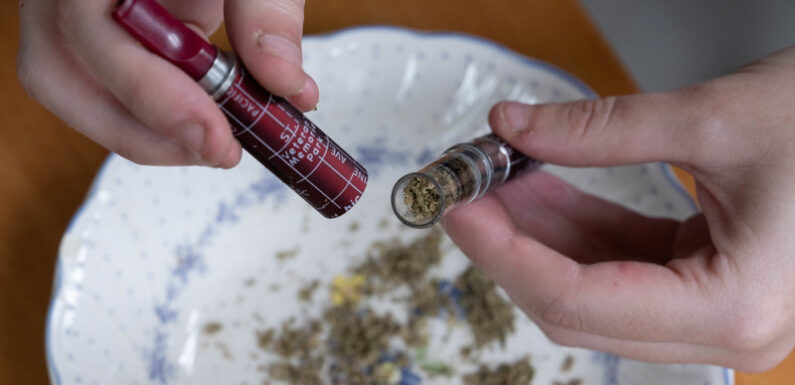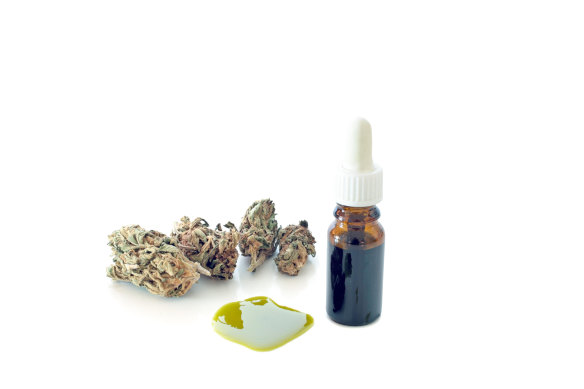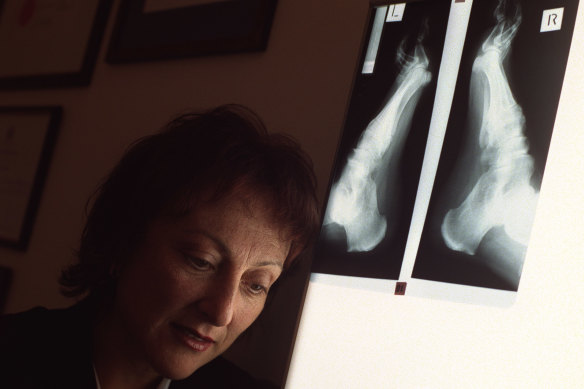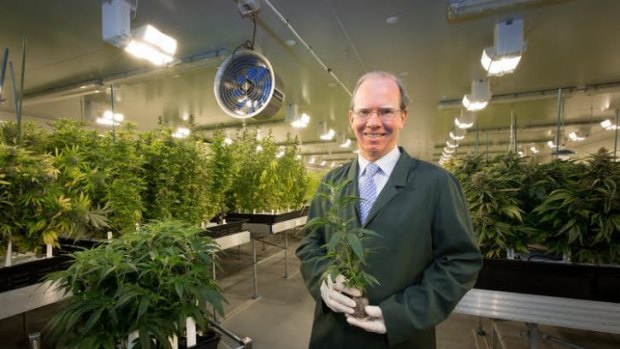
Save articles for later
Add articles to your saved list and come back to them any time.
Key points
- Some of the growth in Australia’s medical cannabis industry appears to be driven by the recreational market.
- The Therapeutic Goods Administration has turned to “bulk approvals” to keep up with prescriptions.
- In confidential advice to government, it warned the “unregulated” industry is pushing the boundaries of the scheme.
Australia’s drug watchdog has flagged concerns about a boom in cannabis prescriptions and warned that such rapid growth is affecting its ability to limit harm in some patients.
Government data indicates that 291,469 patients began medical cannabis treatment through authorised prescribers between January and June, up from just 3086 three years ago.
Researchers suspect these figures are inaccurate as they may double-count some patients. But the industry grossed about $244 million in revenue in 2022, with revenue growing at 41 per cent from the first half of the year to the second, according to data shared with the industry and viewed by this masthead.
Australia’s medical cannabis scheme was set up in 2016. Because there are almost no approved cannabis medicines, the scheme allowed doctors to prescribe the drug through a pathway meant to provide compassionate access – for example, to patients dying of cancer.
According to the Therapeutic Goods Administration, however: “Access of medicinal cannabis products is pushing the boundaries of the intention of these schemes, which is primarily to provide access to goods for use in rare and extenuating circumstances where the patient has exhausted approved and available treatments in Australia, typically approved in overseas jurisdictions.”
The agency warned Health Minister Mark Butler of this late last year in a document outlining possible regulatory reforms, obtained by this masthead under freedom of information laws.
Medical cannabis comes in several forms.Credit: Alamy
Applications by GPs to prescribe cannabis are meant to be individually vetted by health bureaucrats, but so many are coming in, those deemed low risk are now “bulk” approved, the document notes.
It raised concerns about how the drug was being prescribed and whether there was adequate scrutiny over the “risk-benefit” ratio for patients.
“The prolonged therapeutic use of ‘unapproved’ medicinal cannabis products, especially in the vulnerable paediatric population calls into question the appropriateness of the TGA to continue to place the risk of prescribing of these products with the medical profession whilst an unregulated industry continues to grow…” the document reads.
“There is little scrutiny on whether the risk-benefit ratio remains favourable over time for patients who use them. This concern is especially relevant when it comes to long-term use of THC-containing products, especially in children, who are more vulnerable to the deleterious effects of this cannabinoid.”
The leading reason for prescribing cannabis is to treat pain. Scientists and advocates had long hoped that when proper research was done, cannabis would prove to be a powerful treatment for chronic pain.
Monash University’s Rachelle Buchbinder is worried about an opioid epidemic being replaced by a medical cannabis epidemic.Credit: Mario Borg
Professor Rachelle Buchbinder, a world-leading pain researcher based at Monash University who published a review of the data in 2021, said there was now enough evidence to conclude that the drug did not work for pain.
“Based on the trial evidence, there is small to very-small to no benefit in pain, or in function, or in sleep quality,” she said.
“It’s very concerning. And I’m worried about an opioid epidemic just being replaced by a medical cannabis epidemic.
“This is another commercially driven treatment where the harms are going to be outweighing the benefits. This is going in the wrong direction.”
Professor Michael Vagg, dean of the Faculty of Pain Medicine at the Australian and New Zealand College of Anaesthetists, said the cannabis boom was “ethically more concerning” than opioids because at least opioids were shown to be effective in treating pain.
“The cannabinoid use boom that is beginning is much more blatantly commercial than the increase in opioid prescribing. It is also ethically concerning that the vast majority of prescribing is for chronic pain, and is being done by non-specialists who have a very narrow focus on pharmaceutical management of pain.”
Professor Iain McGregor, academic director of the Lambert Initiative for Cannabinoid Therapeutics, strongly disagreed with Vagg and Buchbinder, pointing to self-reported data showing significant and sustained quality-of-life improvements.
“Sensory measures of pain may not change that much with cannabis. But what does seem to change is people’s ability to get on with and enjoy their lives. And that’s fantastically useful.
“To try to equate medicinal cannabis uptake with the opioid epidemic is grotesque. Opioids kill people. Cannabinoids do not.”
Because medical cannabis is not an approved medicine, internal TGA documents warn it is unable to police its safety and quality, which is “unpredictable”. Internal TGA data tracked 521 adverse event reports linked to medical cannabis up to February this year, 77 requiring hospitalisation and 16 being life-threatening.
The TGA was also notified of four deaths in children using medical cannabis, although “the deaths appear related to underlying health conditions”, the documents note.
An analysis of prescription data to mid-2021 by a team of Australian researchers showed a sharp change in prescription patterns from 2019. Before 2019, most prescriptions were for people over the age of 45, and they were mostly prescribed cannabis oils.
But after 2019, prescriptions for younger men increased, with data suggesting this group preferred either dried cannabis flower or ‘inhalation products’ – possibly vape cartridges.
Dr Elizabeth Cairns, the University of Sydney researcher who led that analysis, said there were good medical reasons some users would prefer flower, like needing quick relief for pain or anxiety.
Peter Crock, chair of Medicinal Cannabis Industry Australia, said it was clear recreational users were turning to the scheme. “There’s no doubt there’s an element of that.”
However, moving users away from illegal products towards purer medical cannabis was a valuable piece of harm-minimisation, Crock said.
Peter Crock, in 2017 when he headed the Cann Group.
Critics of the drug were “missing the point”, he said. “Yes, there isn’t clinical evidence for cannabinoids – because it’s been prohibited.
“It’s a circular argument that’s really frustrating. Saying there’s a higher risk from cannabinoids than from opioids is an inappropriate direct comparison.”
In comments on online forums seen by this masthead, users swap advice on strain selection – “Durban Poison or Maali Sky?” – and marvel at the easy access to legal bud. “I cannot believe this is happening,” wrote one, after getting a script three hours after applying online. “Holy sh-t!”
Injured workers are also increasingly convincing government insurer WorkSafe to cover the cost of medical cannabis; 108 workers received cannabis subsidies in the last 11 months. A WorkSafe spokeswoman said the insurer “does not support the use of medicinal cannabis except in exceptional circumstances”.
A spokesman for the TGA this month said the “use of an unapproved therapeutic good for a patient is a clinical decision made at the discretion of the medical practitioner”.
“The prescriber and their patient take full responsibility for the use of the unapproved product.
“All submissions received under the Special Access Scheme B and Authorised Prescriber scheme for unapproved medicinal cannabis are assessed on a case-by-case basis by a TGA pharmacist.”
A spokeswoman for Butler, the health minister, declined to say how he responded to the TGA’s advice. “The decision to prescribe medicinal cannabis is a clinical decision taken by a patient’s doctor,” she said.
Liam Mannix’s Examine newsletter explains and analyses science with a rigorous focus on the evidence. Sign up to get it each week.
Most Viewed in National
From our partners
Source: Read Full Article


